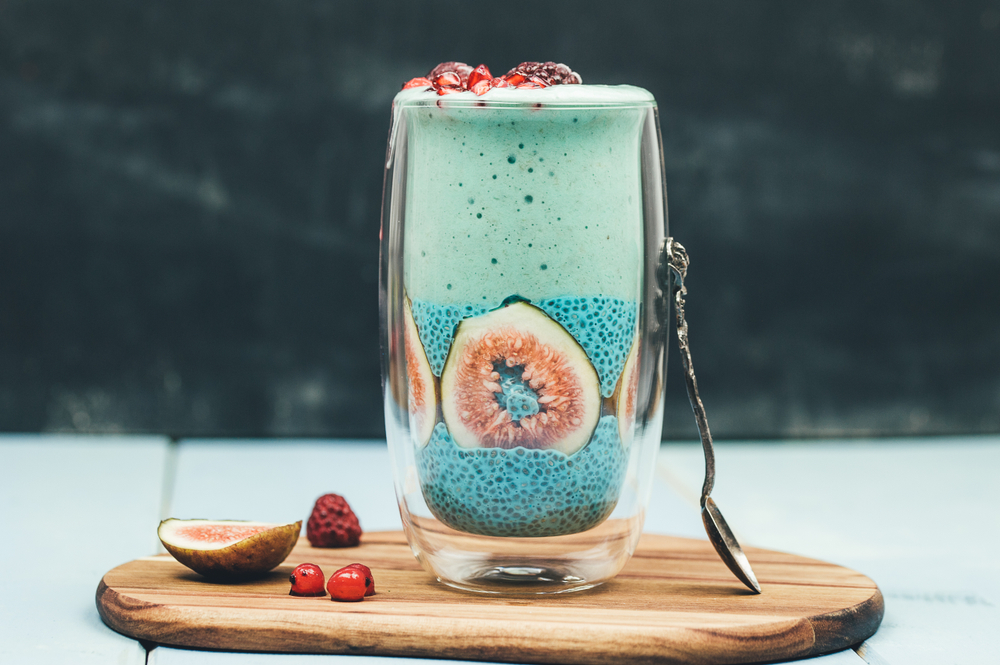In the world of superfoods, one distinctively vibrant contender has captured the attention of health enthusiasts and nutritionists alike—blue spirulina. With its striking blue hue reminiscent of clear tropical waters, blue spirulina has swiftly emerged as a sought-after dietary supplement. Beyond its aesthetic appeal, this unique form of spirulina offers a plethora of nutritional benefits that contribute to overall well-being.
Let’s dive into the nutritional marvel that is blue spirulina and explore how it can enhance your health.

Blue spirulina, scientifically known as Arthrospira platensis, is a type of microalgae that thrives in alkaline water bodies. Its distinctive blue color is attributed to the presence of phycocyanin, a natural pigment with potent antioxidant properties. While spirulina itself has long been hailed as a nutritional powerhouse, the blue variant takes its benefits a step further.
Blue spirulina has an impressive nutritional profile, making it a valuable addition to any diet. It is a complete protein source, containing all essential amino acids required by the human body. This makes it particularly appealing for vegetarians and vegans looking to meet their protein needs. Additionally, blue spirulina is a rich source of vitamins and minerals, including vitamin B complex, iron, magnesium and potassium, which are essential for various bodily functions. It is easily incorporated into diets with its inclusion in smoothies, for example.
The vibrant blue pigment in blue spirulina, phycocyanin, is not only responsible for its color but also for its antioxidant properties. Antioxidants play a crucial role in combating oxidative stress, which is linked to various chronic diseases and the aging process. Incorporating blue spirulina into your diet can help neutralize harmful free radicals and promote cellular health.
Inflammation is a natural response to injury or infection, but chronic inflammation is associated with a range of health issues. Blue spirulina contains compounds that have been shown to possess anti-inflammatory properties. By reducing inflammation in the body, blue spirulina may contribute to the prevention of chronic diseases such as heart disease and diabetes.
The presence of chlorophyll in blue spirulina contributes to its detoxification benefits. Chlorophyll is known to aid in the removal of toxins and heavy metals from the body, supporting overall liver function and promoting a healthy immune system. Blue spirulina contains a significant amount of dietary fiber, which is essential for maintaining a healthy digestive system. Fiber promotes regular bowel movements, prevents constipation and supports gut health by providing nourishment for beneficial gut bacteria.
While blue spirulina offers a plethora of nutritional benefits, it’s important to exercise moderation and seek guidance from a healthcare professional before adding it, or any supplement, to your diet. Some individuals may be sensitive to spirulina or experience allergic reactions, so it’s advisable to start with a small amount and observe how your body responds.
In the realm of superfoods, blue spirulina stands out as a nutritional gem with its beautiful appearance and a myriad of health benefits. From its complete protein content to its antioxidant and anti-inflammatory properties, blue spirulina offers a holistic approach to promoting well-being. While its vibrant blue hue may be eye-catching, it’s the nutrient-packed profile that truly makes blue spirulina a nutritional powerhouse worth incorporating into a balanced diet.
As with any dietary supplement, consulting a healthcare professional is key to harnessing the full potential of blue spirulina while ensuring it aligns with your individual health needs.








